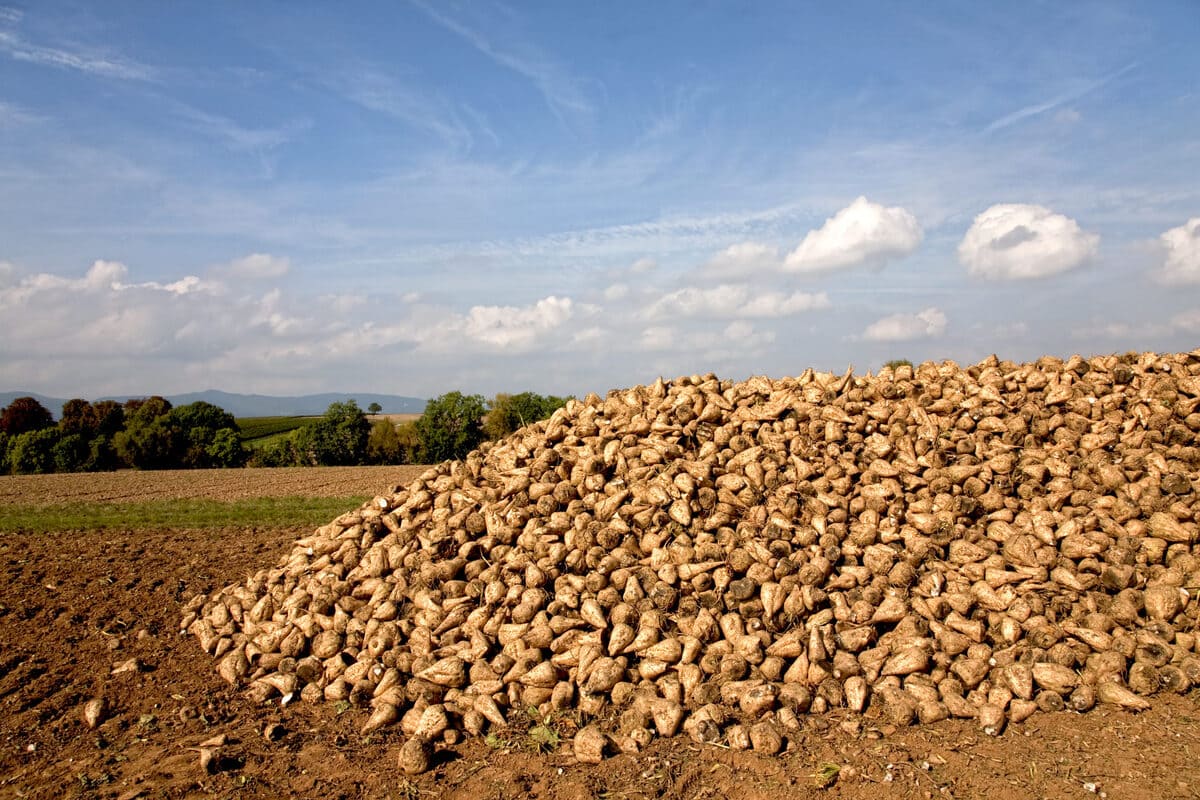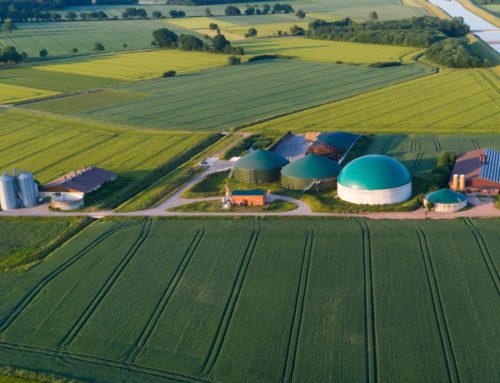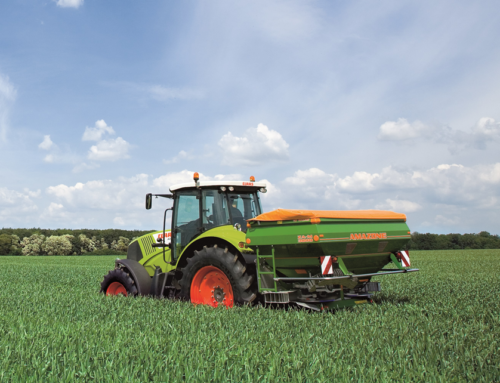Build the foundations for a successful sugar beet harvest with the sugar beet sowing
Today, around 1.5 million hectares of sugar beet is being grown in the European Union. Production is primarily concentrated in three countries: France, with 423,000 ha of cultivation area in 2020, Germany, with 386,000 ha, and Poland, with 238,000 ha. Out of the total crop yield of an estimated 110 million tons – with an average yield of 73.4 t/ha – France cultivated the largest quantity, with almost 36 million tons of sugar beet, with Germany just behind with around 30 million tons and then Poland with roughly 14.3 million tons.
Crop yield is subject to increasingly large fluctuations. Weather conditions play a major role here. Recent drought years have been partially responsible for the noticeable decrease in crop cultivation. Overall we have seen a drop in sugar beet cultivation areas and a decrease in the number of sugar factories in operation. In 1993, there were 328 sugar factories in the EU 27 in operation. Today, there are just 100 left. Often sugar beet cultivation is only considered economical if it is done within a 100 km radius around a sugar factory.
However: in many regions, sugar beet is still an important crop. It breaks up crop rotations that have a heavy emphasis on grains and as a summer crop it provides space for the cultivation of catch crops to improve soil conditions and fight against pests. However, the crop also needs a lot of attention: its requirements with regards to the seed bed, sowing conditions and crop management are considerable.
Sowing sugar beet – influence the crop yield with the sowing
Optimal sowing conditions build the foundations for a successful season that is finished off with a profitable and good-quality harvest. Close attention must be paid to the following points for the sowing:
Seed bed preparation: The aim is to prepare a favourable environment with optimal soil compaction. It should be flat but deep enough to be ploughed by a tractor. Care must be taken to ensure a sufficient recompacting of the seed bed, it should not be too fine. The rule is: seed bed before sowing time.
Sowing date: As early as possible, as late as necessary. Here you need to use your instincts. Sugar beet is usually sown between mid-March and mid-April, but care must be taken in regions with a risk of late frost. An important criteria for the sowing date is the soil temperature, as germination can take place at 5 – 6 °C but the optimal temperature is between 10 and 12 °C.
Check your tools: You must check your tools before starting to sow your sugar beet. Ploughshares, rotary feeders, trailers and pressure rollers must all be checked. Attrition and wear can reduce the tools’ functionality.
Seed placement: An optimal plant population is between 80,000 and 100,000 plants/ha. For this, around 110,000 seeds need to be planted with a distance between rows of 45 or 50 cm and a distance between the plants in the row of 18 to 22 cm. The optimal planting depth is 1.5 to 2.5 cm. This depends on the seed bed preparation as the seeds must lie on a solid subsoil with connection to capillary water.
Section-specific sowing: This is done through the variation of seed spacing in the row. The adjustment of the seeding rate to the different yield potentials of the soil makes it possible to achieve higher yields in specific sections and increases efficiency.
Mouse infestations: If you are concerned about a serious mouse infestation, then ensuring an optimal sugar beet sowing is particularly important. Mice only like the seedling at certain stages of growth. Once the plant has “grown through” this stage, it is no longer interesting for the rodents. It is also a good idea to implement distraction feeding in the field or in specific sections.
Deciding when to plough the soil: If your plant population is unsatisfactory, first the correct crop density must be determined. If there are still over 45,000 plants/ha, then you should avoid ploughing the soil. Even with lower numbers of plants, the following applies: if the beets are distributed evenly, then lower crop densities can also be tolerated. Ploughing the soil is recommended when you have less than 40,000 plants/ha. It should be done quickly so that you do not lose even more growing time.

How can the quantity and quality of sugar beet yields be increased?
With an open-air production, many different factors influence the yield and quality of the crops and not all of these can be controlled by the farmer. This is why it is all the more important to secure the factors that can be influenced in the best way possible. With sugar beet, it is important to remember that ensuring optimal yields depends on two factors: the weight and the percentage of sugar in the beets. This combination gives the sugar yield per hectare. As such, both of these factors must be taken into account when managing the crop.
For high yields, the principles of cultivation techniques – such as sufficient spacing – as well as a timely and perfectly prepared sowing, taking into account the information above, is important. Balanced plant nutrition also plays a prominent role, as a wide range of macro and micro-nutrients are needed for good growth. Fertilisation is even more important because it largely determines the composition of the ingredients. The higher the concentration of sucrose and the lower the contamination with amino acids, potassium and sodium, for example, all of which reduce the amount of extractable sugar, the better the quality of the beets. Here the use of nitrogen fertiliser poses a bit of a dilemma as lots of nitrogen can increase the yield, but it also reduces the sucrose content and increases impurities in the beet sap. As such, only just enough nitrogen should be used so that an optimal ratio of yield to sugar content is ensured.
However, the farmer has the greatest influence on yields and beet quality before even planting the crop, as they choose the variety to cultivate. Half of the yield increases – yields levels have climbed by more than a third since 1993 – are due to improvements in breeding!
Last but not least, it is important to remember that you can only produce high yields and high-quality beets if the plants are healthy. Breeding has also helped us to make big leaps forward in this area, as today numerous varieties with single or multiple resistance to harmful pathogens are available. In addition, monitoring programmes and advisory platforms can help you to implement an integrated plant protection plan.
All these factors help to ensure that the future yields and profitability of the crop are secured and that the sugar beet retains its title as “Queen of the Crops”.



